East African Yellowwood, Common Yellow Wood
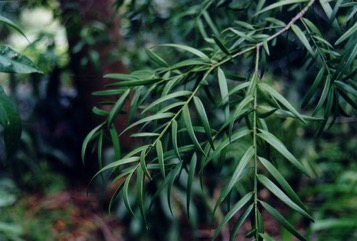
It is a subtropical plant. It grows in mountain forest. It grows between 1,250-2,700 m above sea level. It can grow in arid places. It suits hardiness zones 9-11. Hobart Botanical gardens. Melbourne Botanical gardens. Wittunga Botanical Gardens. Arboretum Tasmania.
Also known as:
Birbirsa, Dagucho, Outeniqua yellowwood, Zigba
Synonyms
- Decussocarpus falcatus (Thunb.) de Laub.
- Decussocarpus gracilior (Pilg.) de Laub.
- Nageia falcata (Thunb.) Kuntze
- Podocarpus falcatus (Thunb.) R. Br. ex Mirb.
- Podocarpus gracilior Pilg.
- Podocarpus gracillimus Stapf
- Taxus falcata Thunb.
Edible Portion
- Fruit, Seeds, Seeds - oil
Where does East African Yellowwood grow?
Found in: Africa, Angola, Asia, Australia, Burundi, Central Africa, Congo DR, East Africa, Eritrea, Eswatini, Ethiopia, India, Kenya, Lesotho, Malawi, Mozambique, Rwanda, South Africa, Southern Africa, St Helena, Sudan, Swaziland, Tanzania, Tasmania, Uganda, Zambia, Zimbabwe
Notes: There are about 6 Afrocarpus species. They occur in Africa.
Growing East African Yellowwood, Common Yellow Wood
Cultivation: Plants can be grown from fresh seed. The fleshy layer is removed. The fresh cones are collected and the flesh removed. The seed are sown into nursery bags. Seeds germinate erratically and can take 6 months. Seedlings need to be transplanted carefully to protect the taproot.
Edible Uses: An edible oil is extracted from the seeds. The ripe fruit is eaten. They are resinous.
Production: It is slow growing.
Nutrition Info
per 100g edible portion| Edible Part | Energy (kcal) | Protein (g) | Iron (mg) | Vitamin A (ug) | Vitamin c (mg) | Zinc (mg) | % Water |
|---|---|---|---|---|---|---|---|
| Fruit | - | - | - | - | - | - | |
| Fruit | 85 | 3 | 1.6 | - | - | 0.2 | 72.7 |
East African Yellowwood, Common Yellow Wood Photos

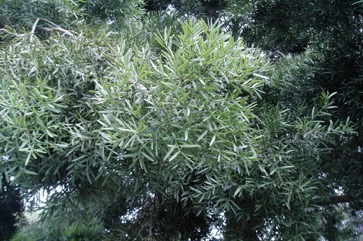
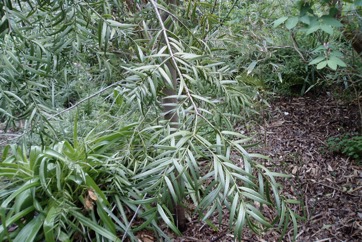
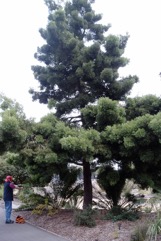
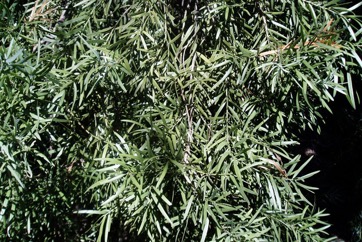
References
Abdillahi, H. S., 2009, Ethnobotany, phytochemistry and pharmacology of Podocarpus sensu latissimo (s.l.). South African Journal of Botany 76 (2010) 1–24 (As Podocarpus falcatus)
Aerts, R., 2008. Afrocarpus falcatus (Thunb.) C.N.Page. [Internet] Record from Protabase. Louppe, D., Oteng-Amoako, A.A. & Brink, M. (Editors). PROTA (Plant Resources of Tropical Africa / Ressources végétales de l’Afrique tropicale), Wageningen, Netherlands. < http://database.prota.org/search.htm>. Accessed 13 October 2009.
Cundall, P., (ed.), 2004, Gardening Australia: flora: the gardener's bible. ABC Books. p 108
Etherington, K., & Imwold, D., (Eds), 2001, Botanica's Trees & Shrubs. The illustrated A-Z of over 8500 trees and shrubs. Random House, Australia. p 80
Fox, F. W. & Young, M. E. N., 1982, Food from the Veld. Delta Books. p 303 (As Podocarpus falcatus)
INFOODS:FAO/INFOODS Databases (As Podocarpus falcatus)
Long, C., 2005, Swaziland's Flora - siSwati names and Uses http://www.sntc.org.sz/flora/
Lulekal, E., et al, 2011, Wild edible plants in Ethiopia: a review on their potential to combat food insecurity. Afrika Focus - Vol. 24, No 2. pp 71-121 (As Podocarpus falcatus)
Notes Roy. Bot. Gard. Edinburgh 45:383. 1989 ("1988") "falcata"
Royal Botanic Gardens, Kew (1999). Survey of Economic Plants for Arid and Semi-Arid Lands (SEPASAL) database. Published on the Internet; http://www.rbgkew.org.uk/ceb/sepasal/internet [Accessed 4th June 2011]
Ruiters-Welcome, A. K., 2019, Food plants of southern Africa. Ph.D. thesis. Univ. of Johannesburg p 91
Seyoum, Y., et al, 2015, Edible Wild Fruit Trees and Shrubs and Their Socioeconomic Significance in Central Ethiopia. Ethnobotany Research & Applications. 14:183-197
van Wyk, B, van Wyk, P, and van Wyk B., 2000, Photographic guide to Trees of Southern Africa. Briza. p 239 (As Podocarpus falcatus)
Venter, F & J., 2009, Making the most of Indigenous Trees. Briza. p 238 (As Podocarpus falcatus)
Wehmeyer, A. S, 1986, Edible Wild Plants of Southern Africa. Data on the Nutrient Contents of over 300 species (As Podocarpus falcatus)
White, F., Dowsett-Lemaire, F. and Chapman, J. D., 2001, Evergreen Forest Flora of Malawi. Kew. p 86 (As Podocarpus falcatus)
World Checklist of Useful Plant Species 2020. Royal Botanic Gardens, Kew
www.worldagroforestrycentre.org/treedb/ (As Podocarpus falcatus)